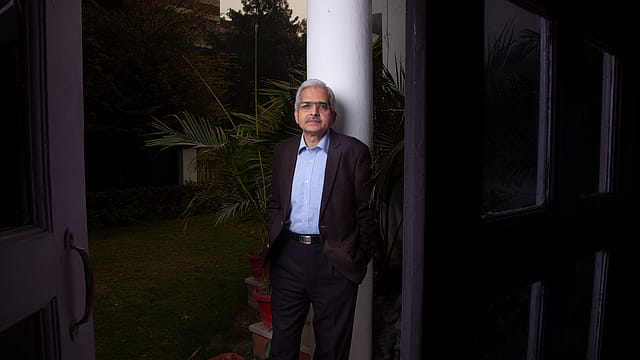Banks, NBFCs need to be careful in relying solely on algorithms: RBI governor
ADVERTISEMENT

Banks and non-bank lenders need to be careful in relying solely on pre-set algorithms for model-based lending through analytics, according to RBI governor Shaktikanta Das.
"Banks and NBFCs (non-banking financial companies) need to be careful in relying solely on pre-set algorithms as assumptions based on which the models are operated. These models should be robust and tested and re-tested periodically. They may require to be calibrated and re-calibrated from time to time based on the changing contours of the financial ecosystem and fresh information," the RBI governor says.
Das says it is necessary to be watchful of any undue risk build-up in the system due to information gaps in these models, which may cause dilution of underwriting standards.
These comments come at a time when increased collaboration of banks and NBFCs with fintechs is facilitating the introduction of innovative products and services and new business models. Digital technologies are offering a powerful medium to access banking and financial services.
This, according to Das, has also brought down operational costs and helped in enhancing the reach of financial services providers.
The banking regulator last week hiked the risk weights of consumer credit exposure of banks and NBFCs by 25 percentage points to 125%.
Growth in assets under management of NBFCs may be moderately lower than 16-18% expected in the current fiscal as unsecured retail loans, the fastest growing segment in the NBFC AUM pie so far, are likely to see relatively slower growth as NBFCs recalibrate their strategies due to the recent regulatory measures issued by the RBI, according to CRISIL Ratings.
January 2026
Netflix, which has been in India for a decade, has successfully struck a balance between high-class premium content and pricing that attracts a range of customers. Find out how the U.S. streaming giant evolved in India, plus an exclusive interview with CEO Ted Sarandos. Also read about the Best Investments for 2026, and how rising growth and easing inflation will come in handy for finance minister Nirmala Sitharaman as she prepares Budget 2026.
"The recent regulatory measures are targeted at unsecured retail loans and do not impact the secured asset classes where growth is expected to be steady. Importantly, the regulatory changes do not impact HFCs," says Gurpreet Chhatwal, managing director, CRISIL Ratings.
The increase in risk weights for unsecured retail loans to 125% from 100% will result in a decrease in capital adequacy ratio (CAR), linked to the share of unsecured retail loans in overall AUM of NBFCs. However, CRISIL Ratings says that unsecured retail loans contribute only 12-14% to the NBFC sector AUM pie, while the balance comes from secured asset classes such as housing, vehicle, SME4 and gold loans, where risk weights remain at 100% or lower.
The two largest traditional segments of home loans and vehicle finance now comprise 25-27% each of the NBFC AUM. Both segments are expected to report steady growth. In the home loan segment, growth of 12-14% next fiscal will be driven by HFCs' focus on affordable home loans (ticket sizes of less than ₹25 lakh), while vehicle finance is expected to grow 18-19% this fiscal and sustain 17-18% growth next fiscal on the back of solid underlying-asset sales, as per CRISIL.
"Unsecured loans is now the third largest segment in the NBFC AUM pie. And this segment is likely to see a moderation in growth due to the regulatory measures which affect NBFC AUM growth on both their asset and liability sides on three fronts," adds Chhatwal.
